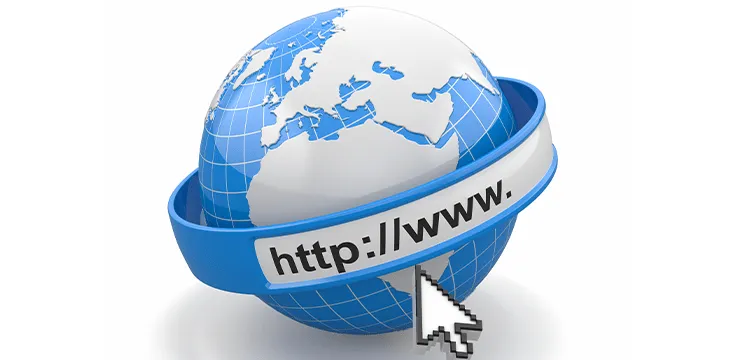|
Getting your Trinity Audio player ready...
|
Time to take back the internet.
In an age where the internet is swimming in ads and malware, personal data and web surfing history is collected and sold in order to pay for all this wealth of information that is routinely given away for free on the web. It is hard to find anyone around who remembers what the internet could have been like if it were not for the fact that the ad companies had taken over.
But what if I told you that there was another way.
Web 3.0
When people talk about Web 3.0 these days, they mostly mean NFTs. These are likely the same people who dubbed Web 2.0, which was just their buzzword for Ethereum’s programmable internet computer—a dream that was hyped but never realized. But these people would be wrong because Web 3.0 is really about the ability to pay for data, or equivalently, the ability for data to earn money. This is a two-sided coin, but both sides are beneficial. It means that you as data content creators can directly monetize people accessing your data, reducing the power of the intermediaries and portals (such as Facebook and Google), but it also means that as users, you can pay directly for data, data search, and bandwidth, which stands to end the ad-based monetization model of the internet itself. Why?
Rewind back to the early days of the web. The difference between the web and the internet needs to be clarified for you youngsters out there. The internet is a loose term describing networks built on top of TCP/IP, the internet protocol. ‘Web’ is actually an application protocol or an overlay protocol on top of TCP/IP, and that protocol is HTTP or the hypertext transfer protocol. HTTP is the protocol by which web browsers speak, and through this protocol, web data or web pages can be transferred.
On the back of the web, the entire $10 trillion e-commerce industry was built. This is the industry that started with a small little online bookstore and an online auction house for used junk. Prior to Amazon and E-bay, the internet was nothing more than a digital info kiosk for big companies looking to look cool like IBM, Sun, Oracle, Novell, Cisco, Intel, Apple, and Microsoft. (Some succeeding more than others). But it was really the creation of e-commerce (buying things through the web as the primary sales channel) that really launched the internet from a hobbyist fancy to a full-blown business sector.
All thanks to a small upstart company called Netscape, who created a small piece of software that was nothing more than an HTTP renderer/viewer, dubbed “navigator.”
History lesson aside, while today ads on the internet are so commonplace that people don’t even notice them, it is important to remember that in the beginning and for a good ten years or so after the web was popularized, there was no such thing as ads. There was no way for data hosts (or webservers) to be paid for their services of storing or sending data. Consequently, there was little incentive to index the data, and thus what we now call the ubiquitous service of web search was still yet to be developed. There were some early attempts at running a ‘registry’ based index service, much like the physical analogy of the yellow pages, but that had limited success. Websites and servers were just too dynamic for any registration service to keep up.
Then in pops Google to the rescue.
The founders there had the plan to crawl the web, go through every hyperlink, and map out the internet in real time, continuously, and use this database to back a search engine that would help people find websites they are interested in for FREE. Because there was no way for them to be paid for this service, their bet was that if they could have everyone on the internet going through their search engine, then they would eventually be able to sell website real estate on their search site to advertisers. The ubiquitous business of the internet portal was born. The yellow pages model died, and the magazine and tabloid monetization model won out.
This ‘collect and resell’ model is what eventually brought us to the world where social media developed to further capitalize on the harvesting of people’s data so that it can be sold to companies who would want to pay for it. This is the vampiric monetization model of the internet we have today.
But what is sad is that it all didn’t need to happen.
Error 402 – Payment Required
This little-known HTTP error code, reserved since the original hypertext protocol spec, gives us a glimpse of what may have been if bitcoin or some other form of electronic micropayment system was available a decade earlier. This web error code was meant for a webserver response that a payment is required before the requested page could be sent. You see, the architects of the web knew early on that we needed a way for servers of data to be paid for the service, but they just lacked the peer-to-peer payment network to be able to leverage it.
And so the stage is set, you now have a glimpse of what the master plan is and what might be possible. The details will have to wait for next week’s article, where we discuss in detail what the future may hold, with IPv6 and cryptographically generated addresses, totally secure communications, and taking back ownership of your data. Rest securely in the knowledge that thanks to BSV, and the rebirth of Bitcoin, soon that error code may actually have servers that will use it.
The future is just around the corner. Stay tuned.
/Jerry Chan
Read “Error 402 – payment required Part II” here.
Watch: CoinGeek New York panel, A Better Internet Experience using Blockchain

 07-02-2025
07-02-2025 





